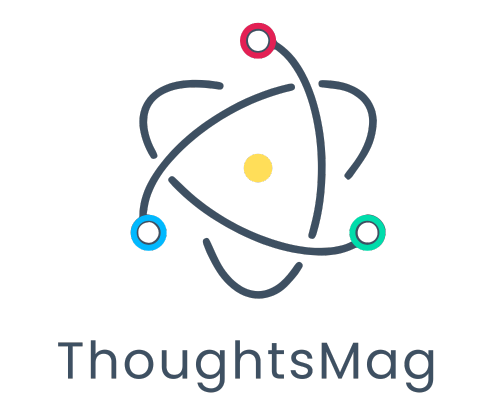Blueprints of Tomorrow: Architectural Concepts Shaped by Algorithms and AI Image Generation
In a world where technology continually redefines the limits of creativity, the fusion of architectural design with AI image generation is carving out a new frontier. Traditional blueprints are evolving into dynamic, data-driven visions that harness the power of algorithms to imagine structures never seen before. This exciting intersection between AI and architecture is not only revolutionizing how we conceptualize our built environment but is also redefining the creative process itself.
The New Role of Algorithms in Architectural Design
At the heart of this transformation lies the advent of parametric and generative design. Algorithms now play a pivotal role in generating complex, adaptive forms that were once unimaginable with conventional methods. These techniques allow architects to quickly iterate and optimize designs, considering an ever-growing list of variables—from environmental constraints to material performance.
- Adaptive Complexity: Designers can now input parameters that mimic the intricate demands of nature and urban life, resulting in structures that are both aesthetically captivating and functionally robust.
- Speed and Precision: With the aid of computational power, the design process becomes more fluid, enabling rapid prototyping and refinement that keeps pace with modern architectural challenges.
AI Image Generation: A Creative Catalyst
One of the most striking developments is the integration of AI image generation into the design process. This technology provides architects with a powerful tool to visualize ideas in real time. By generating realistic images and simulations, AI helps bridge the gap between abstract concepts and tangible outcomes.
Platforms like CGDream utilize advanced Flux technology to generate naturally-looking visuals: https://cgdream.ai/. Their approach supports sustainable practices by providing designers with LoRA styles, which can be applied to numerous design elements while maintaining a high level of consistency between images. This integration of technology and sustainability is quietly reshaping how architects view the potential of data-driven design.
Imagine a scenario where an architect inputs a few key parameters into an AI system, which then produces a series of vivid, detailed renderings. These images can capture light, texture, and spatial dynamics with remarkable accuracy, serving as both a source of inspiration and a practical guide for subsequent construction phases.
Merging Data-Driven Design with Sustainability
Beyond aesthetics, algorithms are crucial in driving sustainability in architecture. Modern design isn’t just about visual appeal—it’s about creating spaces that perform efficiently and harmoniously with the environment. By integrating environmental data and energy modeling into the design process, architects can simulate how a building will perform in various conditions.
- Environmental Integration: AI systems can analyze data from weather patterns, sunlight exposure, and even urban heat islands to propose designs that optimize natural energy use.
- Material Efficiency: Digital simulations enable designers to experiment with innovative materials and construction techniques, minimizing waste and reducing the overall environmental footprint.
Digital Fabrication and the Future of Construction
The influence of algorithms extends into the construction phase itself. Digital fabrication methods, such as 3D printing and CNC milling, are redefining how building components are manufactured and assembled. This technological shift is complemented by AI-driven image generation, which allows for the detailed visualization of these processes before they occur on-site.
Detailed AI-generated images can highlight potential construction challenges, enabling preemptive adjustments to design and fabrication methods. In addition, professionals are exploring innovative solutions such as the architecture ai image generator tool, which facilitates seamless image-to-3D and 3D-to-image transitions. This capability enhances precision and creative exploration in digital fabrication processes, ensuring that the final built form mirrors the original design intent with high fidelity.
A Collaborative Future: Blending Disciplines and Ideas
The integration of AI into architectural design is also sparking a new era of interdisciplinary collaboration. Architects, engineers, data scientists, and artists are coming together to explore the full potential of algorithmic design. This cross-pollination of ideas is giving rise to innovative solutions that address some of the most pressing challenges in urban development and sustainability.
- Creative Synergy: AI image generation serves as a common language that bridges the gap between technical precision and creative expression. It allows professionals from diverse backgrounds to share insights and collaborate more effectively.
- Educational Initiatives: Universities and industry forums are increasingly offering programs and conferences that focus on the intersection of AI, design, and digital fabrication, ensuring that the next generation of architects is well-equipped to navigate this rapidly evolving landscape.
Looking Ahead: The Promise of AI-Enhanced Architecture
As we look to the future, the role of AI image generation in architecture is set to expand even further. Emerging technologies promise to refine these tools, making them more accessible and intuitive for professionals at all levels. The ability to instantly generate photorealistic images from abstract data is revolutionizing not just design, but the very way we imagine our built environment.
In essence, the blueprints of tomorrow are already being drafted today through a synergy of algorithms and AI-driven visualization. This convergence is not simply a technological trend—it represents a fundamental shift in our approach to architecture. By embracing these advancements, designers are not only creating more efficient and sustainable structures but are also exploring new realms of aesthetic expression that were once confined to the realm of imagination.
The fusion of AI image generation with algorithmic design is a testament to the endless possibilities that emerge when technology and creativity intersect. It is a glimpse into a future where our built environment is as dynamic and adaptive as the digital age itself—a future where every line, curve, and color is informed by both data and daring innovation.
With this powerful blend of art and science, the architectural landscape of tomorrow promises to be as inspiring as it is groundbreaking—a true blueprint of the future.






